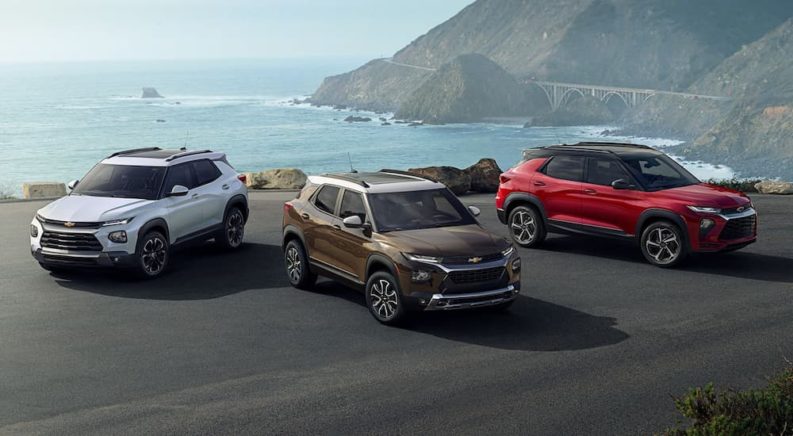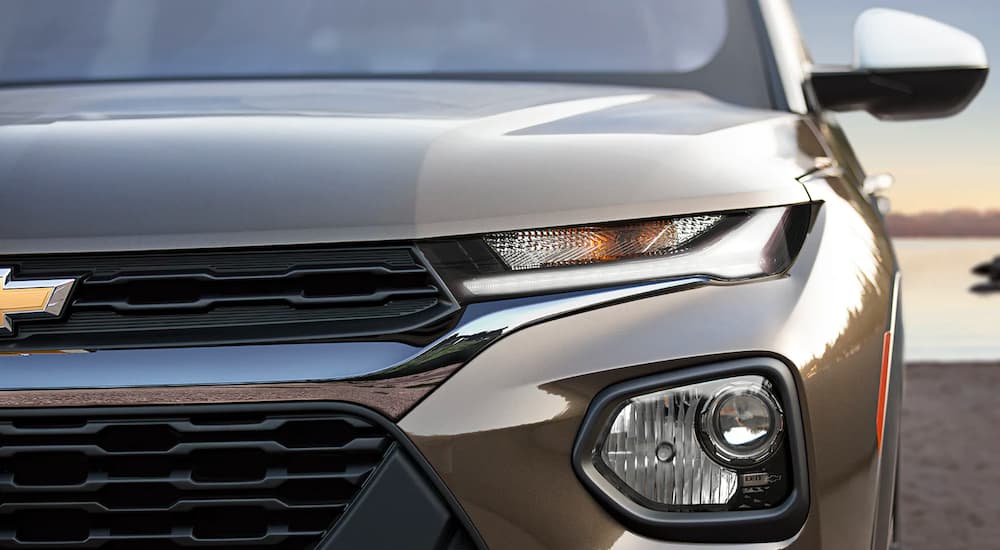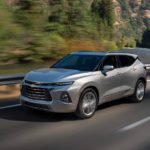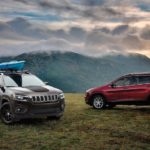Buying a car used to be much simpler. You’d pick a nameplate (Chevy, Ford, etc.), drive to your neighborhood dealer, and point at the one you wanted. It’s not that simple today. Let’s say you’re shopping for a 2022 Chevy Trailblazer. You might think the hard work is done after you settle on the vehicle you want, but thanks to a dizzying array of trim levels, you’re only halfway there.
Post-World War II America saw an exponential increase in family car sales, paving the way for the now-ubiquitous SUV. The Trailblazer is a perfect example of how the segment has exploded. It’s a small SUV with mainstream appeal, made even more popular by an expansive trim range, which has even included performance-oriented SS versions. Believe it or not, this trim level structure is intended to make choosing easier.
The art of designing trim levels dates back to post-World War II and the evolving role of passenger cars in suburban American family life. As consumer interests became more varied and complex, automakers paid attention, bundling popular equipment and features into a series of trims that simplified the purchase process. Today, it’s not uncommon to see models with six or more trims.
The History of Car Sales and Chevy SUVs
Americans’ love affair with the automobile began back in the 1920s. Unfortunately, two World Wars and a depression thwarted automakers’ vision of a car in every driveway. It wasn’t until the late-1940s that production lines churned out enough volume to stoke buyers’ interests, and by 1965, car sales had doubled again to over 9.3 million cars sold in a single year. The rest, as they say, is history.
Concurrently, the federal government was busy underwriting millions of veterans’ mortgages with the G.I. Bill of Rights, and as new families spread out to the suburbs, cars quickly shifted from nice-to-have luxuries to a household necessity. Meanwhile, infrastructure legislation in 1944 and 1956 funded billions of dollars of improvements to highways and roads across the country.
Chevy was one of the first manufacturers to introduce what we now know as the SUV. The aptly named Suburban entered the scene in 1935 and grew in popularity as families migrated out of the city. It wasn’t until the 1960s that truck-like family vehicles became mainstream, and demand exploded. Soon, SUVs and crossovers became icons of suburban family life. Demand continues to increase, and automakers can’t build new SUVs fast enough.
As the SUV exploded in popularity, manufacturers like Chevrolet recognized that buyers wanted more choices in both size and performance. Not all buyers felt comfortable behind the wheel of large SUVs that sat on truck platforms, so it’s no surprise that models like the Trailblazer evolved from a large, boxy ute to a sleek and fuel-efficient compact crossover.
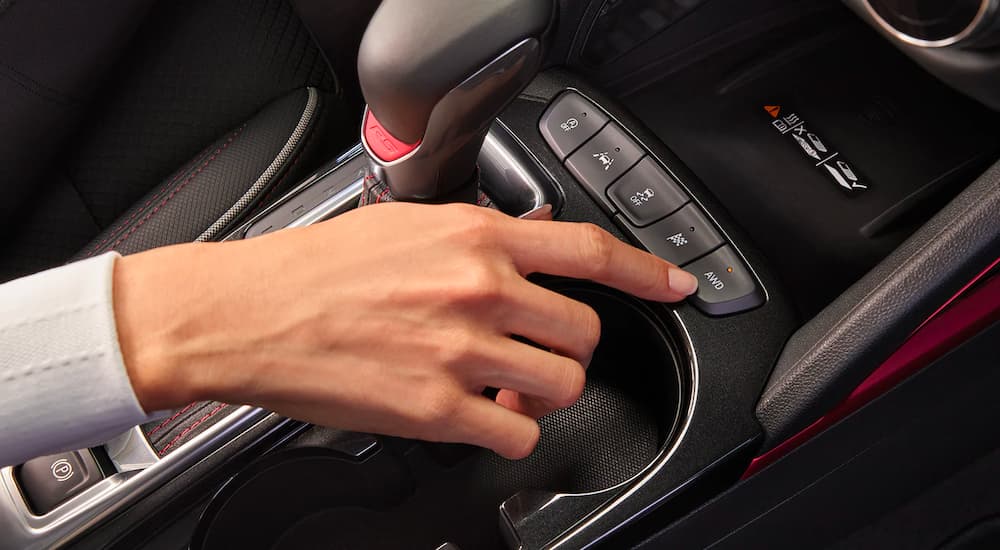
The Evolution of the Trailblazer
The Chevy Blazer took on a luxury personality in the Trailblazer trim. Soon, the name was recognizable and sought after enough that it became its own separate model. Interestingly, this is how the Silverado nameplate was born (it was formerly a trim level of the C/K full-size pickup). Other Chevy models that were once trim levels of other vehicles include the Monza and the Tahoe.
As the Trailblazer name separated from the big Blazer SUV, Chevy was tasked with establishing it as a desirable full-size SUV. It was originally designed on a truck platform and, in its first generation, earned the distinction of most powerful SUV in its class, thanks to the standard inline six-cylinder engine that delivered 273 horsepower. If that wasn’t enough, Chevy also offered a more powerful optional V8 on certain trims.
Even early generations were available in upwards of four trims, including the SS high-performance version and even a 7-passenger extended model that offered three rows of seats. The Trailblazer (originally known as the TrailBlazer) was briefly discontinued, then reintroduced in 2021 in its current form, a compact SUV with sporty styling and a four-trim lineup that remains well under the $30,000 mark.
Today’s Trailblazer doesn’t look much like earlier iterations, but it does take advantage of name recognition and a similar trim level logic that bundles popular equipment, eliminating the need for buyers to consider long, often confusing lists of optional features. Without bundled trims, the variety of configurations would number in the thousands, complicating manufacturing and creating total confusion for buyers.
2022 Trailblazer Trim Logic
For 2022, Chevy simplified the Trailblazer lineup to include four trims and two powertrain options. Sure, there are still equipment packages and other add-ons that complicate the process of choosing, but a four-trim lineup is manageable, especially when you consider that Chevy-rival Toyota’s RAV4 asks buyers to pick from six trims and figure out the difference between a plain RAV4 and a RAV4 Prime.
Chevy does create some confusion with the top-end Activ and RS trims. They’re priced identically, which begs the question: why? The answer is fairly straightforward and boils down to consumer preference. Chevy found that the Trailblazer is equally desirable to off-road adventure seekers and more style-oriented buyers. What one buyer wants, the other doesn’t, hence two evenly priced trims.
The Activ features a different suspension, skid plates, and more expensive all-terrain tires, while the RS receives special blackout trim and interior cloth/leatherette seating. There’s also a D-shaped sport steering wheel and red accenting found exclusively on the RS. Consumer demand didn’t support a more expensive trim that incorporated all of these features, so the lineup asks buyers to pick.
Meanwhile, the entry LS and mid-range LT trims are easy to distinguish from one another. Moving up to the LT (which most buyers opt to do) unlocks access to premium equipment and features not possible with the base model. By contrast, the RS and Activ trims are more specialized and designed with features premium buyers demand.
Trim Levels Truly Simplify Your Purchase
It may seem counterintuitive, but creating complex trim levels allows automakers to simplify the purchase process for buyers. Each trim represents a bundle of the most popular options and equipment packages. Typically, the base model is there to draw buyers in, but most sales volume occurs in the mid-range trims. In fact, many dealers don’t even carry base models because they’re so unpopular.
Chevy bucked the trend recently when it began offering its Chevy Safety Assist suite of driver-assist safety systems on the base model trims of many of its most popular vehicles, including the Trailblazer. Chevy Safety Assist includes six different features, including collision alerts, automatic emergency braking, and lane keep assist. Even automatic high beams are now standard across the trim range.
Many small SUVs require buyers to purchase a more expensive trim in order to access driver-assist technology rather than making it standard. That’s a big check in the pros column for Chevy and the Trailblazer. It’s differences like these that help explain an automaker’s trim design logic. Believe it or not–as Chevy demonstrates–it’s not always about maximizing profit margins.
The world of automotive marketing is complex and not immediately clear to most buyers, but the best way to cut through the confusion is to do your research before visiting a dealer. Narrow your search to 2-3 vehicles and take a spin through the manufacturers’ websites to learn about trim levels and equipment packages. From there, you can work with a dealer to find the vehicle with the features you want.

